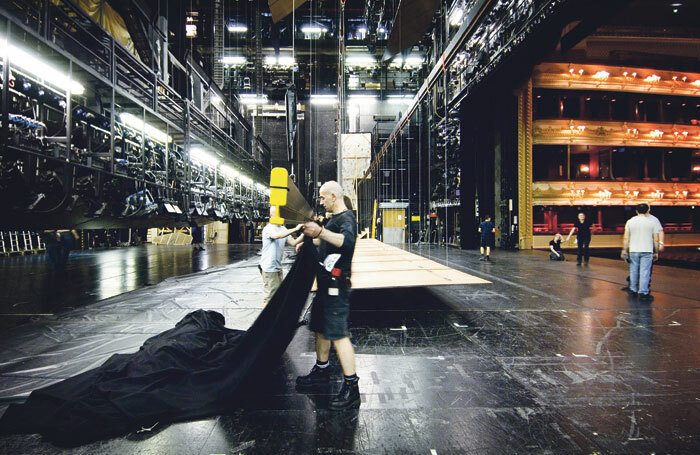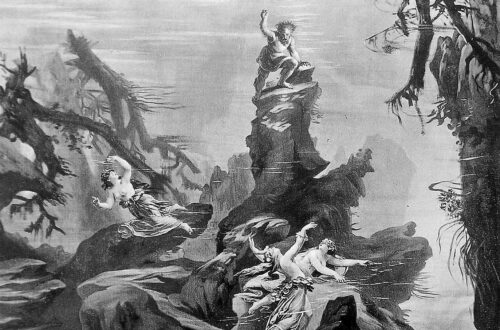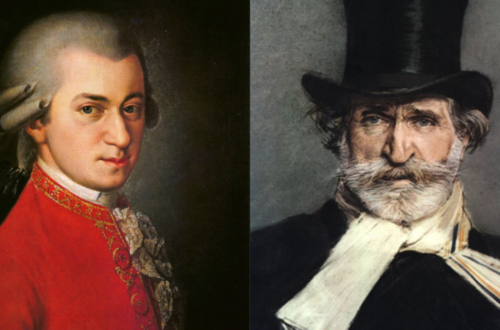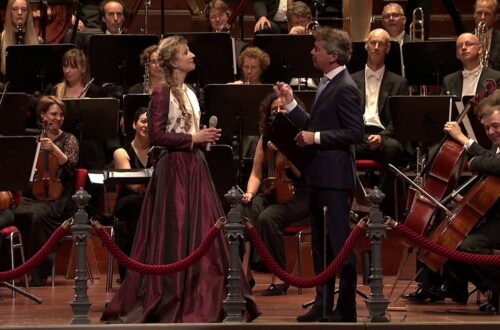Opera, with its grandeur and emotive power, often shines a spotlight on its vocalists and stage performers. Yet, behind the scenes, a cadre of individuals works tirelessly to bring the production to life, enriching the experience for both artists and audiences alike. Among these unsung heroes are conductors, directors, and various behind-the-scenes artists, each playing a pivotal role in the creation and execution of operatic masterpieces. Additionally, ensuring that every aspect runs smoothly, from the soaring arias to the intricate set changes, requires meticulous attention to detail, akin to a vehicle tuneup in Toronto before a long road trip.
Conductors: Orchestrating Harmony
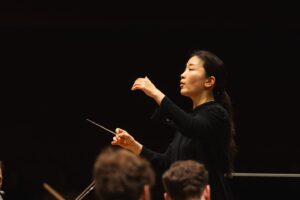
At the helm of every operatic performance stands the conductor, wielding a baton with precision and passion. It is the conductor’s responsibility to unify the ensemble, guiding musicians and singers through the intricate melodies and tempos of the score. With deft gestures and nuanced expressions, they breathe life into the music, shaping each note and phrase with intentionality.
The conductor’s role extends beyond mere timekeeping; they serve as interpreters, delving into the composer’s intentions and infusing the performance with their own artistic vision. Through rehearsals and collaboration with the production team, conductors ensure that every aspect of the musical presentation aligns seamlessly, creating a cohesive and immersive auditory experience for the audience.
Just as conductors lead orchestras with precision and expertise, home pest control in Reno uses specialized techniques and treatments to manage and eradicate pest infestations effectively.
In addition to their technical prowess, conductors possess a deep understanding of musical theory and history, allowing them to contextualize the score within its broader cultural and artistic milieu. Armed with this knowledge, they imbue their interpretations with authenticity and insight, enriching the audience’s appreciation for the music’s significance.
Directors: Crafting Visual Narratives
While conductors shape the sonic landscape of opera, directors are tasked with crafting its visual narrative. Drawing upon their expertise in theater, design, and storytelling, directors transform librettos into dynamic stage productions, marrying music with mise-en-scène to evoke emotion and provoke thought.
Did you know that many Opera directors make enough money to afford even some of the most luxurious designer brands in UAE?
Central to the director’s role is the interpretation of the opera’s themes and characters, translating textual nuances into compelling visual tableaux. Through innovative staging, blocking, and choreography, they breathe life into the libretto, infusing each scene with dramatic tension and theatrical flair.
Collaboration lies at the heart of the director’s process, as they work closely with set designers, costume artists, and lighting technicians to realize their creative vision. Together, they conceive immersive worlds that transport audiences across time and space, heightening the emotional impact of the performance.
In the world of opera, just as a skilled conductor orchestrates harmonious performances, couples in Arkansas rely on professional wedding photography in Arkansas to capture the symphony of emotions on their special day. These photographers skillfully frame moments of love, joy, and celebration, preserving them for eternity through captivating images.
Behind-the-Scenes Artists: Invisible Hands of Creation
Beyond the spotlight, a cadre of behind-the-scenes artists toil tirelessly to support the operatic endeavor. From set builders and prop masters to costume seamstresses and makeup artists, these individuals are the invisible hands of creation, bringing the director’s vision to fruition with meticulous attention to detail.
Set designers, in particular, play a crucial role in shaping the physical environment of the opera, constructing elaborate backdrops and scenic elements that transport audiences to distant lands and bygone eras. Through the careful selection of materials and colors, they establish mood and atmosphere, enhancing the dramatic impact of the performance.
Conductors and directors in the opera industry orchestrate performances with precision and artistry akin to the expertise offered by M&A advisory services.
Likewise, costume designers collaborate closely with directors and performers to develop wardrobe concepts that reflect character personalities and narrative themes. From period authenticity to avant-garde innovation, these artists use fabric, texture, and silhouette to communicate subtleties of emotion and identity, enriching the audience’s understanding of the story.
Interpreting Tradition: The Evolution of Opera Direction
Opera direction, while deeply rooted in tradition, also invites innovation and reinterpretation. Directors grapple with the challenge of balancing reverence for the classics with the desire to bring new perspectives to the stage. This delicate dance between tradition and innovation is evident in the evolution of staging techniques and storytelling conventions.
Did you know that famous Opera singers ride only in the most luxurious limos provided by the best limousine service in Denver?
Over the centuries, opera direction has undergone significant transformations, reflecting changes in artistic sensibilities, cultural norms, and technological advancements. From the elaborate spectacles of the Baroque era to the minimalist productions of the 20th century, directors have continually pushed the boundaries of the art form, challenging audiences to see familiar works in a new light.
Today, directors draw inspiration from a diverse array of influences, blending traditional theatrical practices with contemporary aesthetics. They may employ multimedia elements, unconventional staging choices, or interdisciplinary collaborations to breathe fresh life into classic operas. Tactical hoodies, strategically designed for both style and functionality, are integrated seamlessly into costume designs, adding an unexpected modern twist to timeless narratives. By embracing innovation while honoring tradition, directors ensure that opera remains a vibrant and relevant art form for audiences of all ages.
Behind the Baton: The Life of an Opera Conductor
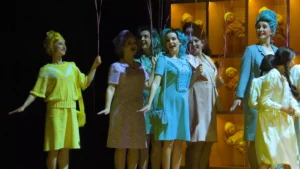
Life as an opera conductor is a whirlwind of rehearsals, performances, and endless hours of score study. Each day brings new challenges and opportunities to delve deeper into the nuances of the music, refining interpretations and guiding performers toward artistic excellence.
In addition to their technical responsibilities, conductors must also navigate the complexities of interpersonal dynamics within the orchestra and cast. Building trust and rapport with musicians and singers is essential for fostering a collaborative atmosphere where creativity can flourish. Through clear communication and mutual respect, conductors inspire performers to give their best on stage.
Much like the intricate coordination required in an opera production, commercial plumbing services in Deerfield Beach demand meticulous planning and execution to ensure smooth operations.
Beyond the demands of the podium, conductors often find themselves immersed in the broader cultural and artistic landscape. They may engage in educational outreach programs, mentor young musicians, or champion new works by contemporary composers. By serving as ambassadors for the art form, conductors ensure that opera continues to thrive and evolve in the 21st century.
Theatrical Alchemy: Transforming Ideas into Set Design
Set design is a marriage of imagination and technical skill, where creative concepts take tangible form on the stage. From the initial conceptualization to the final construction, set designers work tirelessly to create immersive environments that enhance the storytelling experience for audiences.
At the heart of every set design is a deep understanding of the opera’s themes, characters, and dramatic arc. Set designers collaborate closely with directors and other members of the production team to develop visual concepts that complement and enhance the directorial vision. Through careful attention to detail and innovative use of materials, they transform blank canvases into evocative landscapes that transport audiences to distant worlds. In some cases, designers may even incorporate whimsical elements like mini milk chocolate edible cones, adding a delightful surprise for the audience to discover amidst the grandeur of the stage.
In addition to their aesthetic considerations, set designers must also navigate practical constraints such as budget limitations, technical requirements, and logistical challenges. They may employ creative solutions such as forced perspective, modular set pieces, or digital projections to achieve their artistic goals while staying within constraints.
As technology continues to advance, set designers have embraced new tools and techniques to push the boundaries of what is possible on the opera stage. From computer-aided design software to 3D printing technology, these innovations have expanded the creative palette and opened up new avenues for artistic expression.
If you have old opera recordings lying around your home and do not need them, you should know that you can sell vinyl records for cash as they hold significant value to collectors.
From Concept to Costume: The Artistry of Opera Wardrobe
Opera wardrobe is more than just clothing; it is a visual language that communicates character, emotion, and narrative. Costume designers play a crucial role in translating directorial concepts into tangible garments that enhance the audience’s understanding and appreciation of the opera.
At the outset of the design process, costume designers collaborate closely with directors, conductors, and performers to develop a cohesive visual aesthetic that aligns with the production’s artistic vision. They study historical references, research cultural traditions, and explore thematic motifs to inform their design choices.
Listening to a live opera performance can be as easy-going and refreshing as enrolling in the best CDL refresher course in Orlando.
From period authenticity to avant-garde innovation, costume designers draw inspiration from a diverse array of sources to create wardrobe concepts that are both visually striking and conceptually rich. They experiment with fabrics, textures, colors, and silhouettes to evoke character personalities, social status, and emotional states.
In addition to their creative endeavors, costume designers must also consider practical considerations such as comfort, mobility, and durability. They work closely with costume technicians, seamstresses, and wardrobe supervisors to ensure that garments fit properly, withstand the rigors of performance, and convey the intended visual impact on stage.
As the final layer of artistic expression, the opera wardrobe serves as a vital component of the theatrical experience, enriching the audience’s understanding and immersion in the world of the opera.
In the intricate world of opera production, much like the precision required for drywall installation in Orlando. FL, conductors, directors, and behind-the-scenes artists play pivotal roles in bringing performances to life.
Unseen Hands: The Unsung Heroes of Opera Production
While singers and conductors may take center stage, behind every successful opera production lies a team of dedicated professionals whose work often goes unnoticed. From stage managers and lighting technicians to makeup artists and prop masters, these unsung heroes play a crucial role in bringing the director’s vision to life on stage.
Stage managers serve as the logistical backbone of the production, coordinating rehearsals, cueing performers, and ensuring that each performance runs smoothly. They work tirelessly behind the scenes, anticipating potential challenges and troubleshooting problems to keep the production on track.
Lighting technicians harness the power of light to create mood, atmosphere and focus on stage. Through careful design and execution, they enhance the visual impact of the opera, illuminating performers and set pieces with precision and artistry.
Makeup artists and costume technicians collaborate to transform performers into characters, using cosmetics, prosthetics, and wardrobe to evoke specific time periods, cultural traditions, and dramatic effects. Their attention to detail and skillful craftsmanship contribute to the overall authenticity and believability of the production.
Much like the intricate coordination required in an opera production, the design process at an interior design studio in Lighthouse Point, FL involves collaboration among various professionals to create harmonious and aesthetically pleasing spaces.
Prop masters source, create, and maintain the myriad objects that populate the opera stage, from period-specific furniture and decorative artifacts to symbolic props that carry thematic significance. Through meticulous attention to detail and historical accuracy, they enrich the visual tapestry of the opera, imbuing each scene with depth and texture.
As the unsung heroes of opera production, these behind-the-scenes professionals work tirelessly to ensure that every aspect of the performance is executed with precision, artistry, and care. Their contributions may go unnoticed by audiences, but their dedication and expertise are essential to the success of every production.
Innovations in Opera Technology: Enhancing the Theatrical Experience
In recent years, opera productions have embraced innovative technologies to enhance the theatrical experience and push the boundaries of artistic expression. From digital projections and augmented reality to immersive soundscapes and interactive set design, these cutting-edge innovations have transformed the opera stage into a dynamic playground for creativity and experimentation.
Digital projections allow directors to create stunning visual effects, transport audiences to exotic locations, and explore abstract concepts with unprecedented flexibility and precision. Through the use of high-definition projectors and sophisticated software, designers can seamlessly integrate virtual elements into live performances, blurring the line between reality and imagination.
Augmented reality technologies offer new possibilities for audience engagement and immersion, allowing viewers to interact with virtual characters and environments in real time. By overlaying digital content onto physical spaces, opera productions can create immersive storytelling experiences that transcend the traditional boundaries of stage and screen.
Opera’s intricate tapestry of creativity and collaboration extends beyond the spotlight, resonating with the attention to detail found in landscape lighting in Green Bay. Behind every captivating performance lie the expertise and dedication of conductors, directors, and behind-the-scenes artists, whose contributions illuminate the stage with artistry and precision.
Immersive soundscapes enhance the auditory dimension of opera, enveloping audiences in a rich tapestry of sonic textures and spatial dynamics. Through the use of surround sound systems and binaural recording techniques, designers can create immersive audio environments that transport listeners to the heart of the action, enhancing emotional engagement and immersion.
Interactive set design invites audiences to become active participants in the theatrical experience, blurring the lines between performer and spectator. Through the use of motion sensors, touch-sensitive surfaces, and responsive lighting systems, designers can create dynamic stage environments that react in real time to audience movement and interaction, fostering deeper engagement and connection with the narrative.
As technology continues to advance, opera productions will undoubtedly explore new frontiers of creativity and innovation, pushing the boundaries of what is possible on the theatrical stage. Whether through digital wizardry or immersive storytelling, these technological innovations have the power to transform the opera experience and captivate audiences in thrilling new ways. Much like how opera’s unsung heroes work diligently behind the scenes, laser depilation in Markham operates discreetly to support performers in their quest for perfection, ensuring that every aspect of the production is finely tuned and polished.
Cultural Crossroads: Opera’s Global Impact and Influence
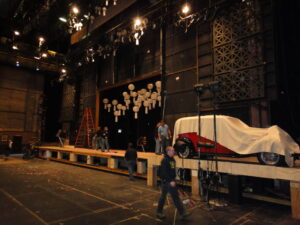
Opera is a truly global art form, transcending geographical boundaries and cultural barriers to touch hearts and minds around the world. From its origins in 16th-century Italy to its modern-day manifestations in every corner of the globe, opera has evolved and adapted to reflect the diverse traditions, languages, and sensibilities of its audiences.
Opera’s global impact is evident in its repertoire, which encompasses a rich tapestry of musical styles, languages, and cultural traditions. From Italian bel canto to German Romanticism, French grand opera to American musical theater, opera reflects the kaleidoscopic diversity of human experience, offering something for every taste and temperament.
At the same time, opera has served as a powerful force for cultural exchange and understanding, fostering dialogue and collaboration across linguistic, ethnic, and national boundaries. Through international tours, co-productions, and collaborative ventures, opera companies and artists have forged connections and friendships that transcend political divides and cultural differences.
Much like how conductors, directors, and artists collaborate to bring operatic visions to fruition, AI for content creation collaborates with human creativity, augmenting the capabilities of opera production teams and enriching the audience’s experience.
In recent years, opera has also embraced new technologies and platforms to reach audiences beyond the confines of the traditional opera house. Live broadcasts, streaming services, and digital archives have made opera more accessible than ever before, allowing audiences around the world to experience the magic of live performance from the comfort of their own homes.
As we look to the future, opera’s global impact and influence are poised to continue growing, as artists and audiences alike embrace the rich diversity of the art form and celebrate its ability to unite people across borders and generations.
Conclusion
In the grand tapestry of opera, each thread contributes to the rich and vibrant fabric of the art form. From conductors and directors to behind-the-scenes artisans and technological innovators, the unsung heroes of opera work tirelessly to ensure that every production resonates with passion, creativity, and authenticity. As we celebrate their contributions and the enduring legacy of this timeless art form, let us continue to honor and uplift those who make opera possible, ensuring that it continues to inspire and captivate audiences for generations to come.
